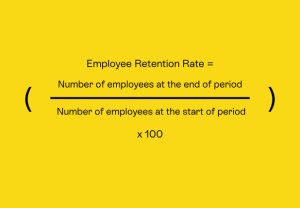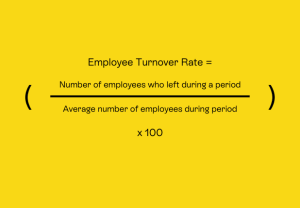Stay Interview Example Questions, Best Practice & Template
A stay interview is a one-on-one conversation that focuses on what keeps employees in their job, and what might cause them to leave.
Read MoreEmployee retention and turnover is set to continue to be one of the most significant challenges for people in HR.
In fact, more than a third (36%) of HR professionals have said employee retention will be their number one focus for the year – followed by recruitment and engagement.
According to HR Grapevine – “Recruiting and retaining employees has overtaken the cost-of-living crisis as the industry’s biggest obstacle for the coming year…”
In simple terms, employee retention refers to the strategies and efforts employed by companies to retain their valuable team members over an extended period.
However it is so much more than just keeping staff on board, it’s about creating a workplace environment where employees feel engaged, supported, and motivated to stay with the company for the long term.
Employee retention rate is the percentage of your workforce that stays at your organisation.
Whereas turnover rate is the percentage of employees that leave your organisation.
Retention rate alone is limited in what it tracks, so calculating both the employee retention rate and employee turnover rate is more useful in getting an overview of employee movements at your organisation.
To calculate your organisation’s retention rate, simply divide the number of staff who have remained employed during a specific period of time by the initial number of employees for the same period of time. Multiply that number by 100.

Your company’s turnover rate provides insights into the proportion of employees leaving the company relative to the average number of employees.

Employee retention directly influences the overall success and growth of a company.
A high staff turnover rate can be costly and will inevitably disrupt the stability of a business.
Retaining talented, motivated and experienced employees not only saves on recruitment and training expenses but also contributes to a more knowledgeable, happier, and cohesive team.
People stay at their jobs for many reasons, but there are clear common denominators that contribute.
The top drivers of successful employee retention include a focus on wellbeing and respect, frequent two-way feedback, autonomy and trust, competitive pay, work-life balance and career development.
It is commonly accepted that a retention rate of 85% – 90% is considered good. (That’s a turnover rate of 10% – 15%).
However, many factors including location, industry and company size contribute to what is considered ‘good’ – so we recommend only using this as a rule of thumb.
According to Office of National Statistics – the average turnover for UK workers is 35%. That’s more than one third of UK employees leaving their jobs each year – so keep this in mind when setting your own retention goals and KPIs for your organisation.
Happy and satisfied employees are productive employees – it’s that simple.
Reduced turnover leads to less stress and a steadier, more established workplace for everyone.
Long-term employees bring valuable skills and knowledge to their roles.
Individuals save time on job searching, while businesses cut recruitment and training expenses.
A content workforce enhances the company’s reputation, attracting top talent and minimising recruitment challenges.
Let’s face it – it is inevitable that people will quit their jobs and change their career paths.
But if you know the signs to look out for, you will be able to equip your workplace with strategies to potentially keep your talented employees around for longer!
Here’s the behaviours and signals to look out for:
Improving employee retention is a strategic and ongoing effort, not an overnight task.
Seeking the support of employee engagement software is key to achieving long-term success and crafting data-driven decisions.
At Stribe our platform is designed to empower HR managers and decision-makers with the tools and surveys needed to enhance employee satisfaction, workplace culture, and implement authentic and long-lasting retention strategies.
With features tailored to achieve comprehensive and holistic employee engagement, Stribe is your way forward to building a motivated and loyal workforce over time.
About the author

Starting out her early career as a journalist, Jade Madeley is an accomplished content writer with 8+ years’ experience across business, personal finance, SaaS, human resources and employee engagement. Working with Stribe, she crafts insightful content that brings complex HR topics to life and drives meaningful action.
A stay interview is a one-on-one conversation that focuses on what keeps employees in their job, and what might cause them to leave.
Read MoreExample questions to use in your next employee onboarding survey for new hires, to ensure they have a smooth and positive start at work.
Read MoreUnlike other forms of feedback, exit interviews and surveys can uncover systemic issues within your company’s culture.
Read More